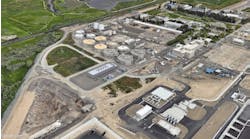With Flexibility, Eastern Grid Can Get More than 30 Percent Renewables Online
With increased flexibility, the eastern grid can get more than 30 percent renewables online, and at times, can boost its renewables penetration to up to 60 percent.
That’s the word from a new report from the Department of Energy’s National Renewable Energy Laboratory (NREL), “The Eastern Renewable Generation Integration Study (ERGIS).” To bring online as much renewable energy as possible, the report calls for policy that allows for power to move across multiple regions.
“The idea is that when there is excess renewable energy, find a place for it to go; don’t waste it,” said Aaron Bloom, project manager for NREL.
NREL used high-performance computers to model in unprecedented detail how the eastern power grid could incorporate higher levels of renewable energy. The researchers analyzed a year of operations at five-minute intervals, which is what grid operators do when they schedule resources.
“We did a certain type of modeling that system operators use today,” said Bloom. Given that 5,600 electricity plants and more than 60,000 transmission lines were involved in the model, the computation got complicated very quickly, he said. The models incorporated a power system that extends from Florida to Maine and portions of Canada and goes as far west as New Mexico. The researchers were able to model a year’s worth of operations in only 19 days, Bloom said.
The researchers found that the eastern power grid can handle up to 30 percent renewables penetration annually. Just as important, they found that the system’s peak instantaneous penetration of combined wind and solar is 59 or 60 percent, said Bloom.
“But that can’t happen all the time,” he added. “Getting to that penetration all the time will require more work. That’s a huge number.”
He added that system operators should be able to manage the bursts of solar and wind on the system.
“You could still manage excess generation problems of 60 percent penetration,” he said.
The key to bringing more renewable energy online and managing the occasionally high levels of renewables penetration is building more flexibility into the system and transmitting the renewable energy longer distances than it is now transmitted, said Bloom.
The study’s modeling showed periods of high penetration of solar and wind on the system that could benefit other regions, he said.
“When this happens, the marginal cost of energy decreases significantly because there are no fuel costs, and that’s advantageous to anyone who can buy it, so you should be able to ship it out.”
Right now, renewable energy is generally sent to neighbors, as opposed to other parts of the eastern system.
“The eastern connection is very meshed. There is lots of transmission capacity to ship (other resources) far distances. We can still flow thousands of megawatts across these lines, whether it’s coal or renewables,” said Bloom.
Energy storage generally isn’t a helpful tool for addressing the seasonal needs of the system, Bloom noted. For example, in the east, solar and wind produce the most energy when the demand for energy is low. Energy storage can’t store that excess energy for very long. However, transmission can solve the problem by shipping the renewable energy to a location that needs it.
The study suggests that policymakers create market incentives that would allow for efficient movement of renewable energy across the eastern interconnection.
For example, Bloom said, certain markets don’t value ramping within the hour. That creates a relatively inflexible system even though the generators can move that fast.
Primary frequency is another product that would be valuable, he said. “It’s a type of flexibility. Flexibility is a continuum. You have fast flexibility in a millisecond time scale.” That might respond, for example, to changes in renewable energy output. Or you may need a daily flex, on a hot day, for example. A weekly flex, on the other hand, is about how ‘I need to move this generator because this one is out of service,'” said Bloom. “These are all different types of flexibility.”
The bottom line: With more flexibility, a 30 percent renewables penetration–or higher–is within our reach.
“We need to get all the flexibility these resources have into the marketplace,” Bloom said.
Check out the new Microgrid Knowledge White Paper Library for more information on renewable energy and microgrids.







